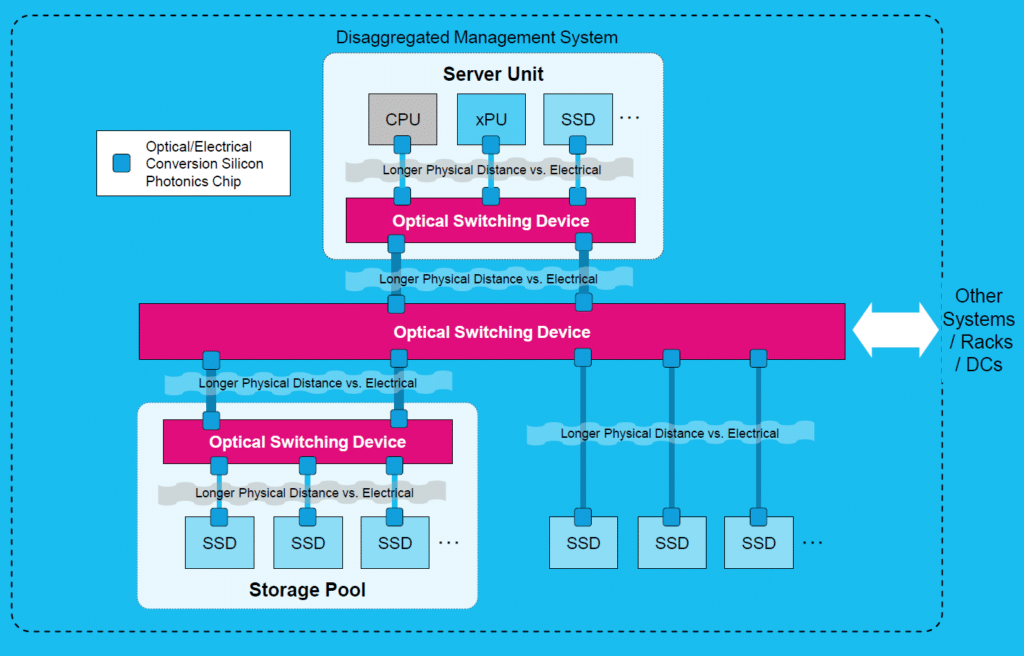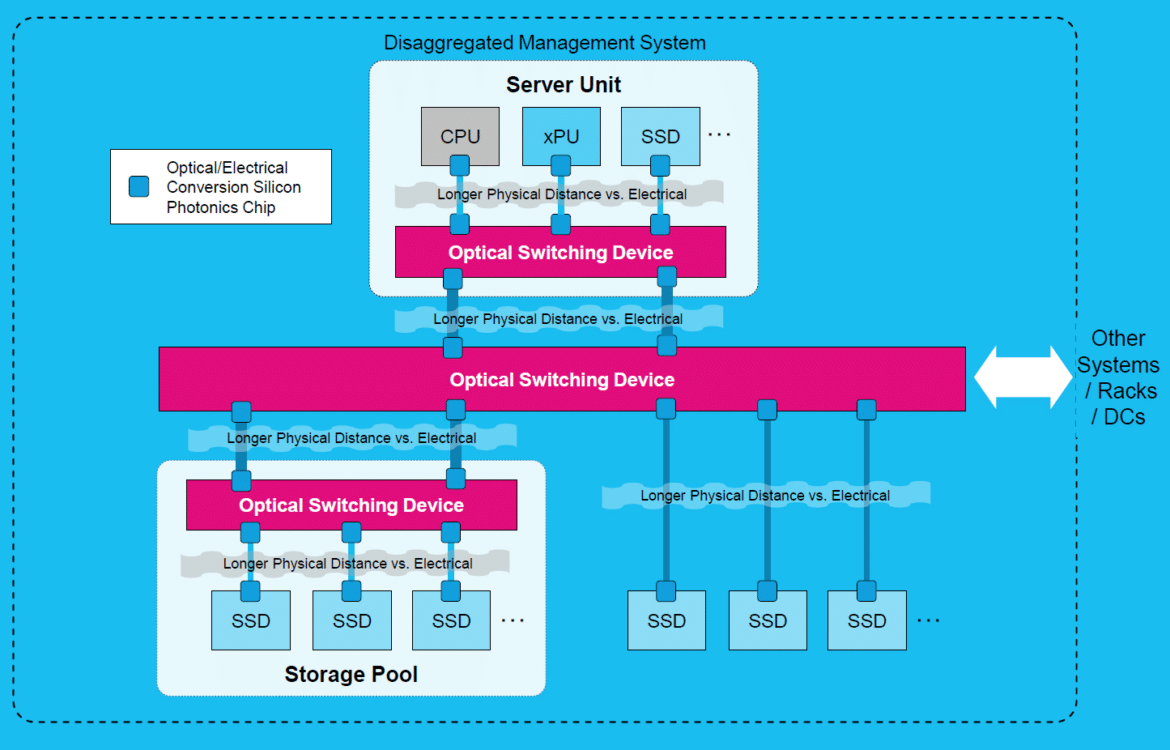KIOXIA America has unveiled an advanced broadband SSD with an optical interface to revolutionize next-generation data center infrastructure.
KIOXIA America has introduced a new broadband SSD featuring an optical interface to transform the infrastructure of next-generation data centers. This innovation, showcased at the Future of Memory and Storage (FMS) conference in Santa Clara, marks a significant departure from traditional electrical wiring. By integrating an optical interface, the new SSD technology offers greater physical flexibility and scalability in data center designs, facilitating improved energy efficiency and signal integrity.

Technological Advancements and Benefits
The key feature of KIOXIA’s new SSD is its optical interface, which allows for substantial physical separation between compute and storage devices. This design flexibility reduces the complexity and bulk of traditional wiring and supports enhanced system designs tailored to specific workloads. By disaggregating components such as SSDs and CPUs, data centers can more efficiently allocate resources based on demand. This optimization improves performance across diverse applications, including HPC environments, supercomputers, and cloud-based HPC systems.
The optical interface provides robust signal integrity, which is essential for maintaining high-performance standards in data-intensive environments. Moreover, it is expected to enable longer distances between components without any decrease in performance. This has been demonstrated up to 40 meters, with plans to extend it to 100 meters. This capability is particularly advantageous for optimizing facility management and enabling improved cooling, power distribution, and spatial planning within data centers.
Collaborative Development and Environmental Impact
This innovation is part of the Japanese Next Generation Green Data Center Technology Development Project, supported by the New Energy and Industrial Technology Development Organization (NEDO). The project aims to achieve over 40% energy savings compared to current data centers, aligning with broader goals of reducing environmental impact and enhancing sustainability in digital infrastructure.
The development of KIOXIA’s optical interface SSD is a collaborative effort involving multiple industry leaders, including Fujitsu, NEC Corporation, AIO Core, Fujitsu Optical Components, and Kyocera Corporation. This multi-company initiative underscores the strategic importance of advancing green technology in the digital sector.
Future Implications for Data Centers
As data centers evolve to handle increasingly complex and demanding applications, such as generative AI, the role of optical connectivity will become more prominent. KIOXIA’s optical SSD technology is poised to support this evolution, providing the foundation for scalable, disaggregated systems that leverage future generations of PCIe technology for even greater bandwidth and speed.
KIOXIA’s new optical interface SSD represents a significant step in developing energy-efficient, high-performance data centers. By replacing traditional electrical connections with optical interfaces, this technology offers enhanced flexibility, scalability, and sustainability, paving the way for the next generation of digital infrastructure.
Engage with StorageReview
Newsletter | YouTube | Podcast iTunes/Spotify | Instagram | Twitter | TikTok | RSS Feed

